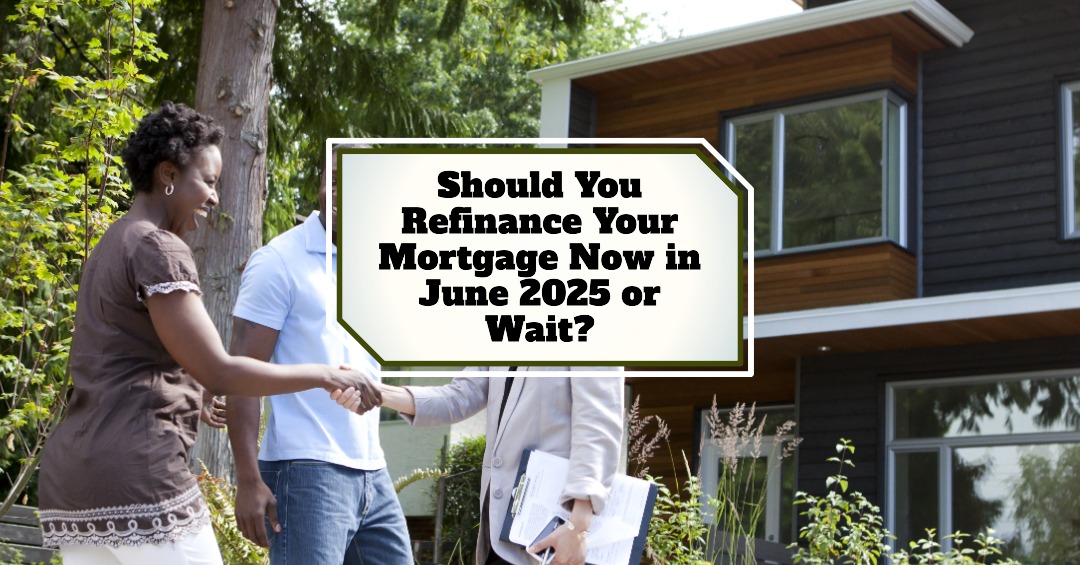In mid-2025, many homeowners are pondering whether to refinance their mortgages. With average 30-year fixed rates hovering around 6.7–6.8%, significantly higher than pandemic-era lows, refinancing decisions are more complex than ever. This in-depth guide walks you through key factors—from your current loan position and personal goals to costs and future rate risks—to help you decide if refinancing now makes financial sense.
As of July 2025, the average 30‑year fixed rate sits around 6.72%, up from recent lows of 6.62–6.67% but still below the nearly 7% peak of late 2024
Despite a brief surge in mortgage applications when rates dipped, economists predict rates will remain between 6% and 7% throughout 2025
The Federal Reserve continues to maintain higher policy rates to combat inflation. Consequently, 10-year Treasury yields remain elevated, keeping mortgage rates sticky .
According to mortgage experts, refinancing into a lower rate, shorter term, or better loan type can yield major savings—often tens of thousands in interest
Key scenarios include:
- Dropping your interest rate by at least 0.5–1%, especially if you plan to stay in your home for several more years .
- Switching from an ARM to a fixed loan before rate resets spike payments
- Eliminating mortgage insurance (PMI) once home equity reaches ~20%
- Consolidating high-interest debt into a lower-rate mortgage—for example, using a cash-out refinance—can be cheaper than credit cards or unsecured loans
If your current rate is under 6% (standard for 84% of U.S. homeowners) or your financial situation hasn’t improved, refinancing could backfire. High closing costs (typically 3–6% of loan value) might outweigh savings
Use a refinancing calculator to compare:
- New vs. old rate differences
- Expected monthly savings
- Loan balance and term
- Estimated closing costs
For example, a 0.5% rate drop on a $300,000 loan may save $150/month. If closing costs total $6,000, the break-even point is about 40 months
Switching to a new 30-year term means paying interest longer unless you choose a 15-year refinance. Decide if lower payments or long-term savings matters more to you .
- Strong credit scores and lower debt-to-income (DTI) ratios help secure better rates
- Equity matters: lenders prefer LTV ≤ 80%. Borrowers with 20+% equity often get discounted rates .
Adoption of VantageScore 4.0 now includes rent and utility history, helping more homeowners qualify — especially those with little traditional credit
| Refinance Type | When to Use It | Trade-Offs |
|---|---|---|
| Rate-and-Term | To reduce rate or loan term | Closing costs, potential higher monthly payment if term resets |
| Cash-Out | To tap equity for home improvements, debt consolidation, investments | Increases loan balance; fees higher |
| No-Cost Refinance | If you’re moving soon or want savings without upfront cost | May have higher interest or lender credits |
| ARM to Fixed | To avoid future rate spikes | Slightly higher rate; you must stay long-term |
| FHA/VA Streamline | To refinance government-insured loans with minimal documentation | Less paperwork but may not offer best rates |
Closing force fees often vary by lender—compare carefully
If your score increased or DTI decreased, you may qualify for rates well below your current one—even in today’s elevated rate environment .
Planning to:
- Stay long-term? Lock in stability.
- Pay off quicker? Switch to 15-year.
- Upgrade? Cash-out is viable.
- Selling soon? Keep costs low or skip refinance.
While the Federal Reserve is in no hurry to cut rates, some economists expect mild rate decreases later in 2025. Watch for improved 10-year Treasury conditions
If you qualify for a low-rate refinance now, earlier action could lock in benefits before any reversal.
- Review current loan terms (rate, balance, PMI, remaining term).
- Check your credit report and score – Dispute any errors, consider improving it.
- Estimate home value and equity (via Zillow or appraisal).
- Use calculators to run break-even scenarios.
- Compare 3–5 lenders for rate quotes and fees.
- Choose loan type, term, and decide on points/no-cost option.
- Apply for pre-approval, submit pay stubs, tax forms, and bank statements.
- Lock in rate when you’re satisfied.
- Complete lender appraisal and finalize disclosures.
- Review Closing Disclosure 3 days before closing; shop insurance/title.
- Attend closing, sign documents, and pay costs or lender credit covers.
- Start new payments—track savings and timeline to break-even.
- Extra Principal Payments lower long-term interest and payoff time.
- HELOC or personal loans for small cash needs—no full refinance.
- Wait and watch if rates are volatile or your timeframe is short-term.
There’s no magic timing, but refinancing in 2025 can be worth it if:
- Your current mortgage rate is well above today’s average.
- You can lower your rate by ≥ 0.5–1%.
- Closing costs are outweighed by long-term savings before you move or refinance again.
- You’re eligible for a better term (e.g., fixed to shorter, or removing ARM risk).
Ask yourself: Will this refinance improve my monthly cash flow, interest savings, or risk profile?
If the answer is yes—and you plan to stay put for at least a few years—refinancing may be a smart move in 2025.
Refinancing your mortgage can still make sense in 2025, despite high rates. If you—
- Secure a rate drop of at least 0.5–1%,
- Plan to stay put long enough to recover costs,
- Have improved credit or equity since your last loan—
then refinancing could be a savvy financial move.
Rely on calculators, compare offers, and talk to trusted mortgage advisors. Reassess personal goals—cash flow, payoff timeline, rate security—over chasing optimistic rate forecasts. Focus on your situation—not the headlines. That discipline is what makes refinancing truly worthwhile.

